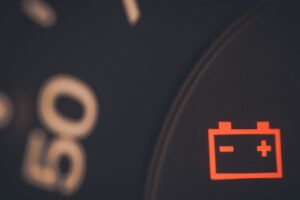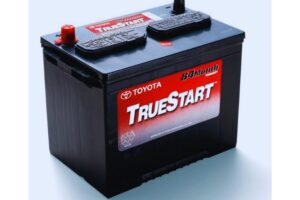Jump starting a car is a common way to get a vehicle running when the battery is dead. However, what if the car has a bad starter? Can you still jump start it? This is a question that many car owners may have, especially if they are experiencing issues with their vehicle.
When a car has a bad starter, it may not be able to start on its own. The starter is responsible for turning over the engine, and if it is not working properly, the engine may not start. In this case, a jump start may not be effective in getting the car running.
However, there are some situations where jump starting the car can be helpful, and it is important to understand when this is the case.
It is important to note that jump starting a car with a bad starter is not a long-term solution. If the starter is not working properly, it will need to be repaired or replaced in order for the car to start on its own.
In this article, we will explore whether or not it is possible to jump start a car with a bad starter, as well as when it may be helpful to do so.
Can You Jump Start A Car With A Bad Starter?
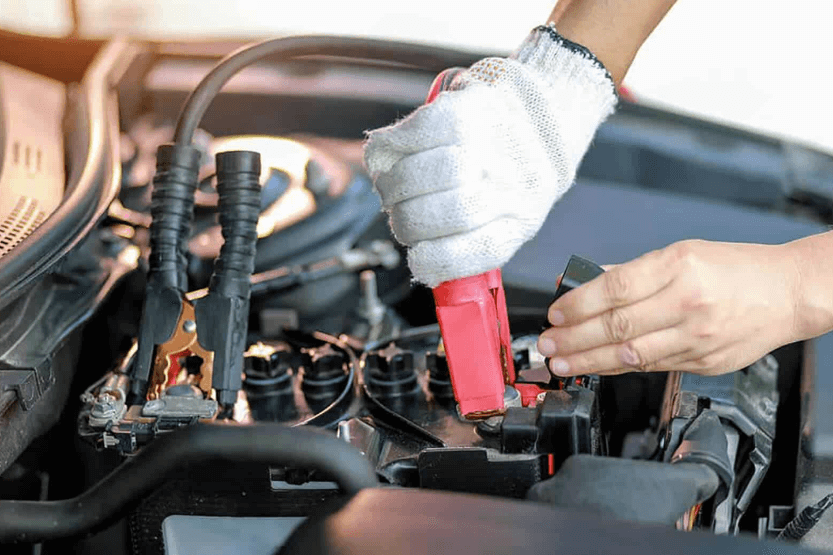
A common question among car owners is whether it is possible to jump start a car with a bad starter. While it is possible, it does not always guarantee success as the primary issue lies with the starter, not the battery.
A starter is a critical component of the engine’s electrical system that cranks the engine to start the internal combustion process.
When the ignition key is turned, it sends an electrical signal to the starter solenoid, which engages the starter motor to turn the engine. A bad starter will not turn the engine, making it impossible to start the car.
Jump-starting focuses on reviving a weak battery, which might not help if the starter is the problem. However, if the vehicle needs more electricity to begin the process of starting, a jump start from another vehicle battery could be of help.
It is essential to note that jump-starting a car with a bad starter is not a long-term solution. It is recommended to have the electrical components, including the starter and ignition system, inspected by a certified mechanic.
In conclusion, while it is possible to jump start a car with a bad starter, it is not a guaranteed solution. It is best to have the vehicle inspected by a professional to determine the root cause of the problem.
Identifying a Bad Starter
A bad starter is a common issue when a car refuses to start, and it plays a vital role in initiating the engine’s combustion process. Recognizing the signs of a malfunctioning starter is crucial.
Common symptoms include a clicking sound when the key is turned, often indicating inadequate power reaching the starter motor, which may also manifest intermittently due to loose connections or a malfunctioning starter solenoid.
Another indication is a grinding noise upon turning the key, signifying poor engagement between the starter gear and the engine flywheel, potentially causing damage if not addressed.
Additional signs of a bad starter involve the engine either not turning over at all or turning over very slowly, possibly due to a dead battery or a faulty starter motor. In some cases, a malfunctioning starter may allow the engine to start briefly before stalling.
To pinpoint a bad starter, careful attention to these symptoms is necessary, followed by consulting a qualified mechanic for diagnostic tests to identify the root cause and recommended repairs.
Role of Battery in Starting a Car
As per Les Schwab (.com), the car’s battery is vital for starting the engine, powering the starter motor, and enabling the vehicle to run.
A dead battery, one that can’t be recharged, or a weak battery with insufficient power can lead to a non-starting car. Jump-starting is often needed to provide the necessary electrical energy.
Before jump-starting, inspect battery terminals for corrosion that could hinder power flow. Clean the terminals using a wire brush and wipe them clean.
When jump-starting, connect cables accurately: the positive cable links the positive terminal of the dead battery to the donor car’s positive terminal, while the negative cable connects the donor car’s negative terminal to a metal part of the car with the weak battery, away from the battery itself.
To sum up, the car’s battery is pivotal for starting, and a dead or weak battery can hinder the process. Jump-starting is a solution, but it’s crucial to check for corrosion and connect the cables correctly.
Jump Starting a Car with a Bad Starter

Jump-starting a car with a bad starter is possible, but it doesn’t guarantee success. The primary issue lies with the starter, not the battery. Jump-starting focuses on reviving a weak battery, which might not help if the starter is the problem.
However, if the vehicle needs more electricity to begin the process of starting, a jump start from another vehicle battery could be of help.
To jump-start a car, you’ll need either jumper cables and another vehicle with a 12V battery or a jump pack that is charged up. As per Repiar Smith (.com), here’s how to jump-start a car with a bad starter:
- Park the car with the good battery close enough to the car with the bad starter so that the jumper cables can reach both batteries.
- Turn off both vehicles and open their hoods.
- Connect the red clamp to the positive (+) terminal on the good battery. Make sure the clamp is securely attached.
- Connect the other red clamp to the positive (+) terminal on the bad battery.
- Connect the black clamp to the negative (-) terminal on the good battery.
- Connect the other black clamp to an unpainted metal surface on the engine block or another grounded metal part of the car with the bad starter. Do not connect the black clamp to the negative terminal on the dead battery.
- Start the car with the good battery and let it run for a few minutes.
- Try to start the car with the bad starter. If it doesn’t start, wait a few more minutes and try again.
- Once the car with the bad starter starts, disconnect the jumper cables in the reverse order that you connected them.
It’s important to note that jump-starting a car with a bad starter motor will not help start the engine. Jump-starting will only boost battery power. A manual transmission car with a bad starter may be pushed or tow-started, but an auto transmission car cannot.
If the car still won’t start after jump-starting it, there may be other issues that need to be addressed. It’s recommended to have the electrical components, including the starter and ignition system, inspected by a certified mechanic.
In summary, jump-starting a car with a bad starter is possible, but it’s not a guaranteed fix. If the starter is the problem, jump-starting won’t help. However, if the issue is a weak battery, a jump start could provide enough electricity to get the car started.
Alternative Methods to Start a Car with a Bad Starter

When a car’s starter goes bad, it can be frustrating and inconvenient. However, there are alternative methods to start a car with a bad starter. In this section, we will explore a few of these methods.
Manual Transmission
If you have a manual transmission vehicle, you may be able to start the car by pushing it. This method is also known as a push start. To push-start a car, you will need to have a few things in place. First, make sure the battery has enough charge to power the lights and other electrical systems.
Next, put the car in second gear and have someone push the car to get it rolling. Once the car is rolling, release the clutch pedal quickly while pressing the accelerator pedal. If done correctly, the car should start.
Jump Starting
Another alternative method to start a car with a bad starter is to jump-start the car. To jump-start a car, you will need a set of jumper cables and another vehicle with a good battery.
First, connect the positive jumper cable to the positive starter terminal on the dead battery. Then, connect the other end of the positive cable to the positive terminal on the good battery. Next, connect the negative cable to the negative terminal on the good battery.
Finally, connect the other end of the negative cable to a metal surface on the engine block of the car with the dead battery. Start the car with the good battery and let it run for a few minutes. Then, try starting the car with the dead battery. If done correctly, the car should start.
Other Options
If push-starting or jump-starting the car does not work, there are a few other options to try. One option is to check the battery terminals and connections for corrosion or looseness. If the connections are loose or corroded, this could be causing the starter to malfunction.
Another option is to check the starter solenoid for damage or wear. If the solenoid is damaged or worn, it may need to be replaced.
In conclusion, there are alternative methods to start a car with a bad starter. These methods include push-starting, jump-starting, checking the battery terminals and connections, and checking the starter solenoid.
It is important to note that these methods are temporary solutions and the starter should be repaired or replaced as soon as possible.
Understanding the Starter Relay and Solenoid
In a car’s electrical system, the starter relay and solenoid work together to engage the starter motor and turn the engine over. The starter relay is an electromagnetic switch that sends power to the starter solenoid, which in turn engages the starter motor.
If the starter relay or solenoid is malfunctioning, the engine may not start or may start intermittently. In some cases, the starter may not engage at all.
To diagnose a faulty starter relay or solenoid, a mechanic may test the solenoid wire for continuity or bypass the starter relay to see if the starter engages. If the starter engages when the relay is bypassed, the relay is likely the problem. If the starter still does not engage, the solenoid may be faulty.
It is possible to jump-start a car with a bad starter relay or solenoid, but it is not a permanent fix. Jump-starting the car bypasses the starter relay and solenoid, allowing the starter motor to engage directly with the battery.
However, this method should only be used in emergencies and the faulty component should be replaced as soon as possible.
In summary, the starter relay and solenoid are critical components in a car’s electrical system that work together to engage the starter motor. If either of these components is faulty, the engine may not start or may start intermittently.
While it is possible to jump-start a car with a bad starter relay or solenoid, it is not a permanent fix and the faulty component should be replaced as soon as possible.
Maintenance and Replacement of a Starter

Regular maintenance and inspection of a car’s starter can help prevent starting problems and extend the life of the starter.
A mechanic can perform a visual inspection of the starter, including checking for any signs of wear or damage to the starter gear or armature. They can also check the electrical connections to ensure they are clean and tight.
If a starter is found to be faulty, it may need to be replaced. The cost of a new starter can vary depending on the make and model of the car. Some auto parts stores may offer discounts or special offers on starters or starter repairs.
Replacing a starter typically involves removing the old starter and installing a new one. It is important to ensure that the new starter is the correct size and type for the specific make and model of the car. A mechanic can also check the starter relay and battery to ensure they are functioning properly.
Regular maintenance and prompt replacement of a faulty starter can help prevent starting problems and ensure the reliable operation of a car.
Precautions While Dealing with Starters and Batteries
When dealing with starters and batteries, there are a few precautions that drivers should take to ensure their safety and avoid damaging their vehicle’s electrical system. Here are some important things to keep in mind:
Check Connections and Corrosion
Before attempting to jump-start a car with a bad starter, it’s important to check the battery connections for corrosion or loose connections.
If the connections are corroded, it can prevent the battery from delivering enough power to turn over the engine. A wire brush can be used to clean the corrosion from the terminals and clamps.
Verify the Battery is Charged
It’s important to verify that the battery has enough charge to start the engine. If the battery is completely dead, it may not be possible to jump-start the car with a bad starter. If the battery is partially charged, it may be possible to jump-start the car, but it may not last long.
Tap the Starter
If the starter is faulty, tapping it with a screwdriver or similar tool may help it turn over. However, this should only be done as a last resort, as it can be dangerous and may cause damage to the engine parts or other components.
Turn Off Accessories
Before attempting to jump-start the car, it’s important to turn off all accessories, such as the radio, lights, and air conditioning. This can help prevent damage to the electrical system and ensure that there is enough power to start the engine.
Ground the Jumper Cables
When connecting the jumper cables, it’s important to ground the negative cable to a metal part of the engine block, rather than the negative battery terminal. This can help prevent sparking and damage to the electrical system.
Position the Vehicles Correctly
When jump-starting a car, it’s important to position the vehicles correctly. The two cars should be parked close together, but not touching. The jumper cables should be long enough to reach between the two batteries, but not so long that they can touch the ground or other parts of the engine.
Check for Leaking Gas
Before attempting to jump-start the car, it’s important to check for any leaking gas or other flammable liquids. If there is a leak, the car should not be jump-started until the leak has been repaired.
Avoid Jump-Starting in Rain
Jump-starting a car in the rain can be dangerous, as it can increase the risk of electrical shock. If possible, it’s best to wait until the rain has stopped before attempting to jump-start the car.
Here’s my advice as a mechanic: To safely jump-start a car with a faulty starter and prevent any damage to the electrical system or engine components, it’s crucial for drivers to carefully follow these precautions.
In Closing
Jump-starting a car with a bad starter may be possible, but it is not a long-term solution. The starter needs to be repaired or replaced to avoid further damage to the vehicle.
If you find yourself in a situation where you need to jump-start your car with a bad starter, make sure to follow the proper steps and safety precautions. Always use caution when working with a car battery, as it can be dangerous if mishandled.
It is important to note that jump-starting a car with a bad starter will only boost battery power and will not help start the engine. In some cases, it may be possible to push or tow-start a manual transmission car with a bad starter, but this is not recommended for automatic transmission vehicles.
If you suspect that your starter is bad, it is best to have it inspected and repaired by a professional mechanic. Ignoring the issue can lead to further damage to the vehicle and potentially leave you stranded on the road.
In summary, while jump-starting a car with a bad starter may be a temporary solution, it is not a long-term fix. It is always best to have any issues with your vehicle inspected and repaired by a professional mechanic to ensure the safety and reliability of your vehicle.

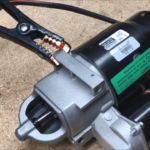
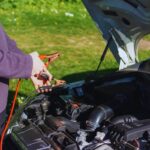
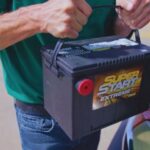

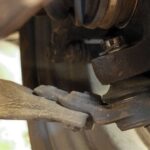
![Bad Alternator Vs Bad Battery [How to Tell] bad-alternator-vs-bad-battery](https://roadsumo.com/wp-content/uploads/2022/02/bad-alternator-vs-bad-battery-150x150.jpg)

